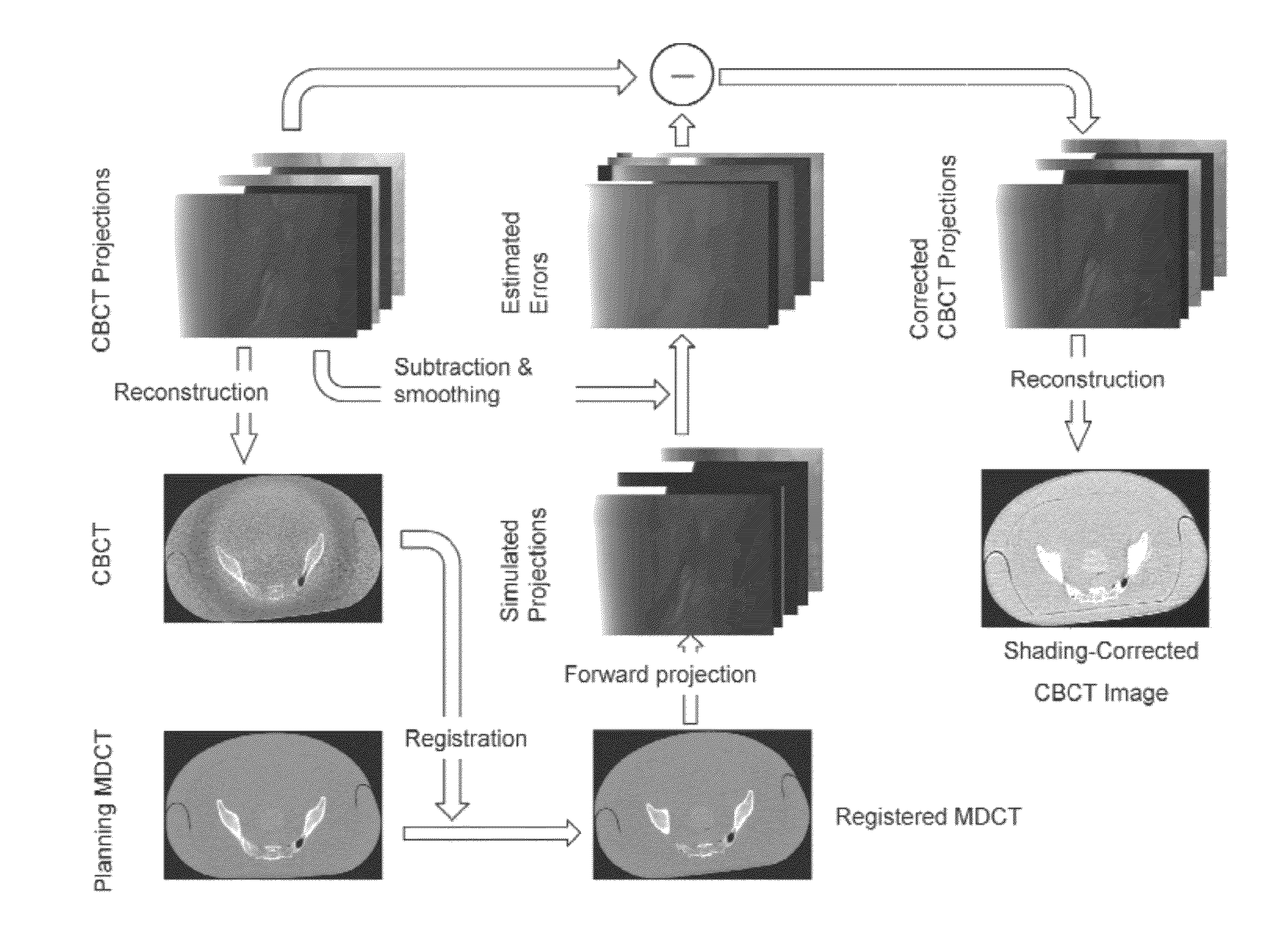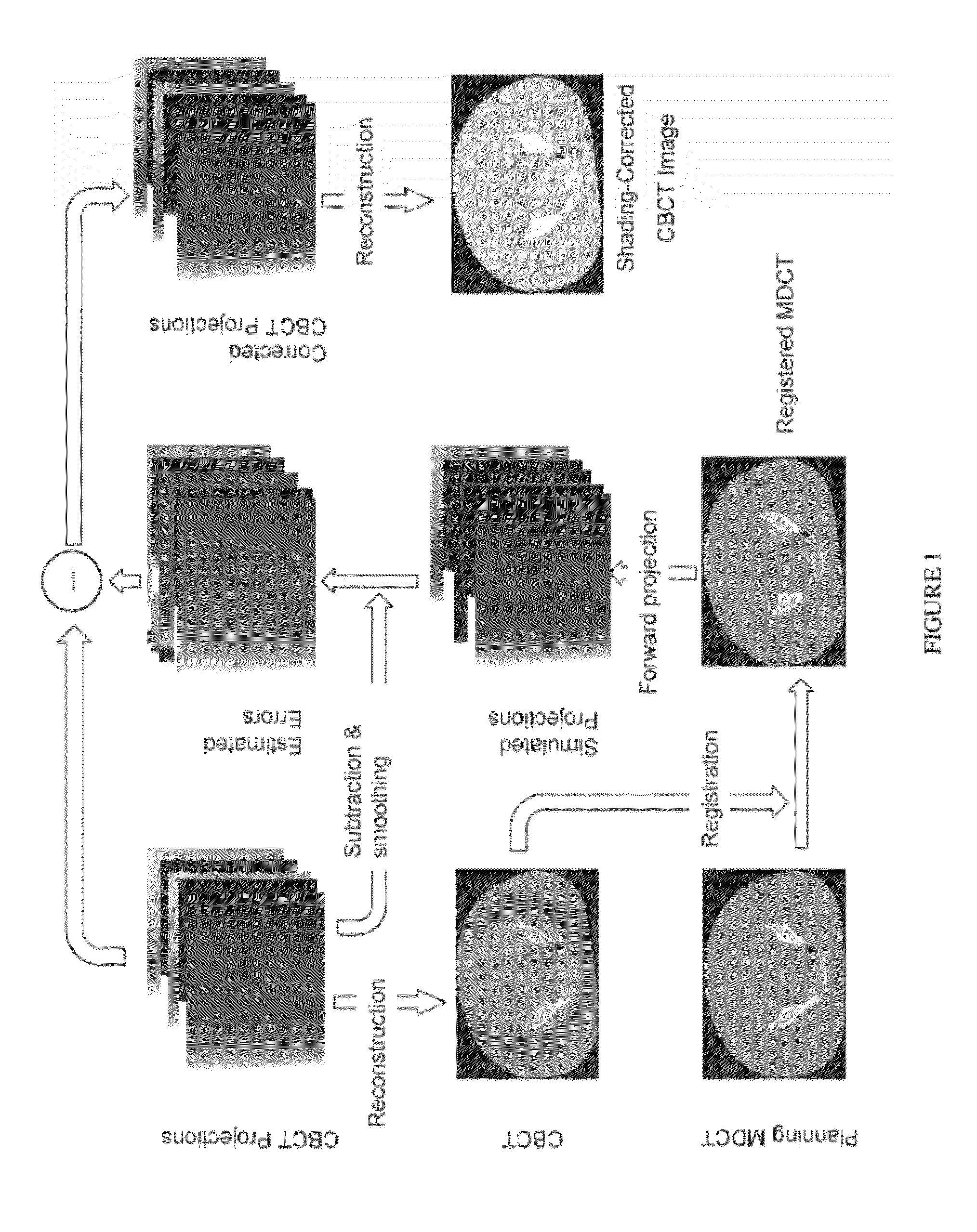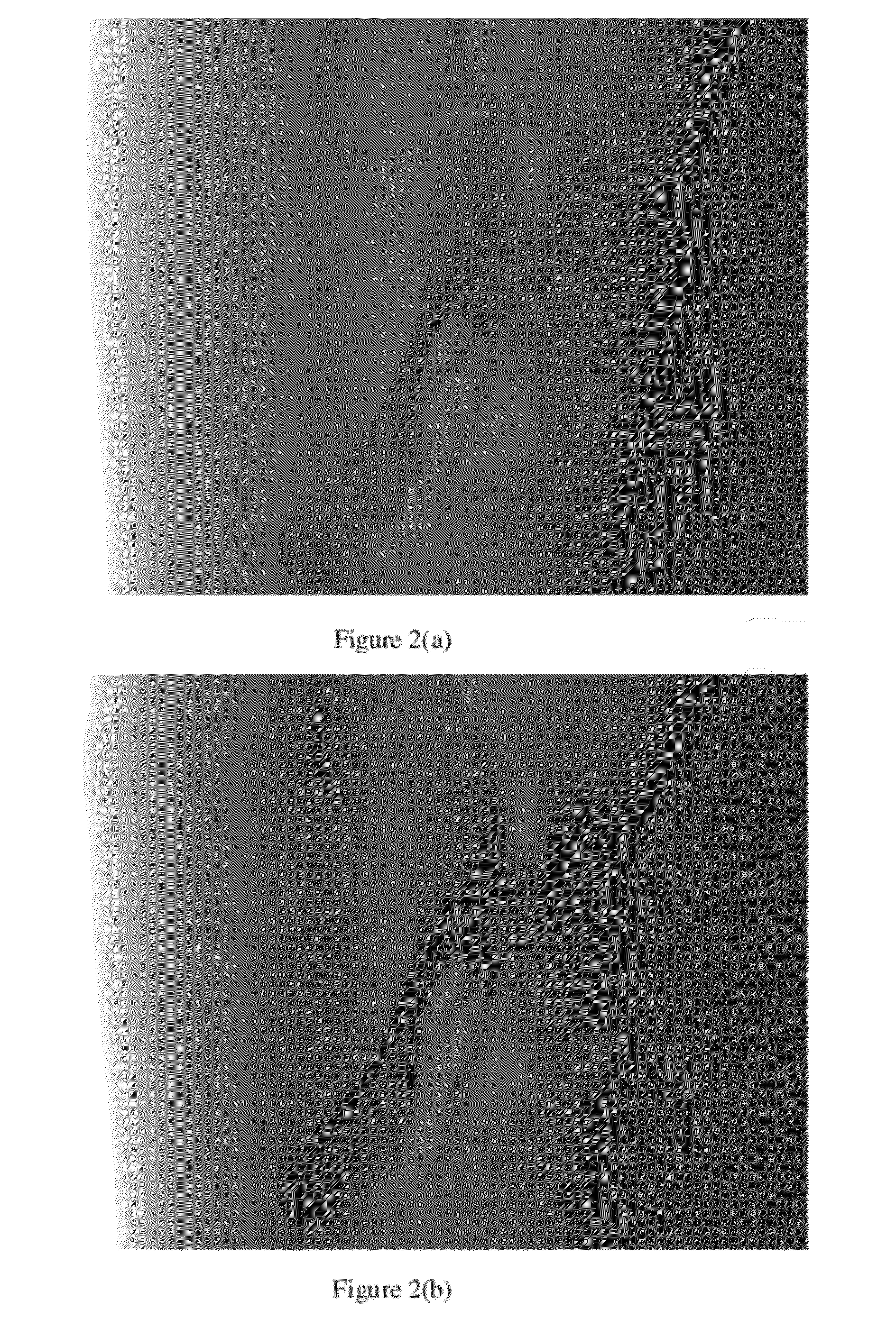Scatter correction methods
a scatter contamination and correction method technology, applied in image enhancement, image analysis, instruments, etc., can solve the problem of high frequency component of estimated error, and achieve the effect of reducing scatter contamination
- Summary
- Abstract
- Description
- Claims
- Application Information
AI Technical Summary
Benefits of technology
Problems solved by technology
Method used
Image
Examples
examples
[0050]The method was evaluated using two phantom studies on CBCT tabletop systems. An evaluation phantom, Calphan©600, was used in the first study, and a detailed quantitative image analysis was carried out on the phantom inserts. The second study used an anthropomorphic pelvis phantom, for which shading correction was more challenging due to the high SPR and object heterogeneity.
[0051]For simplicity of description, the shading correction algorithm was derived assuming that scatter was the only source of errors in the projections while noting that other low-frequency errors from, for example, beam hardening effects and detector nonlinearities were also corrected.
[0052]The MDCT scanner was assumed a detector of 16 slices or less, with negligible scatter signals. With an anti-scatter collimator, the maximum SPR of MDCT was estimated to be on the order of ˜0.01. MDCT reconstruction algorithms can incorporate scatter, beam hardening and empirical uniformity corrections of their own to i...
PUM
 Login to View More
Login to View More Abstract
Description
Claims
Application Information
 Login to View More
Login to View More - R&D
- Intellectual Property
- Life Sciences
- Materials
- Tech Scout
- Unparalleled Data Quality
- Higher Quality Content
- 60% Fewer Hallucinations
Browse by: Latest US Patents, China's latest patents, Technical Efficacy Thesaurus, Application Domain, Technology Topic, Popular Technical Reports.
© 2025 PatSnap. All rights reserved.Legal|Privacy policy|Modern Slavery Act Transparency Statement|Sitemap|About US| Contact US: help@patsnap.com



